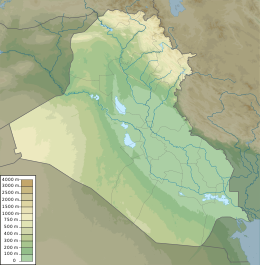Halafian
Halaf culture
Archaeological culture
The Halaf culture is a prehistoric period which lasted between about 6100 BC and 5100 BC.[1] The period is a continuous development out of the earlier Pottery Neolithic and is located primarily in the fertile valley of the Khabur River (Nahr al-Khabur), of south-eastern Turkey, Syria, and northern Iraq, although Halaf-influenced material is found throughout Greater Mesopotamia.
While the period is named after the site of Tell Halaf in north Syria, excavated by Max von Oppenheim between 1911 and 1927, the earliest Halaf period material was excavated by John Garstang in 1908 at the site of Sakce Gözü.[2] Small amounts of Halaf material were also excavated in 1913 by Leonard Woolley at Carchemish, on the Turkish/Syrian border.[3] However, the most important site for the Halaf tradition was the site of Tell Arpachiyah, now located in the suburbs of Mosul, Iraq.[4]
The Halaf period was succeeded by the Halaf-Ubaid Transitional period, which comprised the late Halaf (c. 5400–5000 BC), and then by the Ubaid period.

